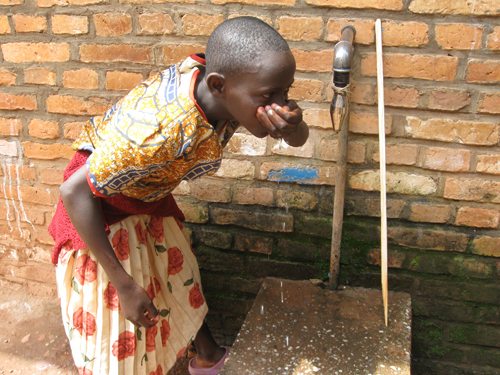

Environment
52% of global population to live in ‘water-stressed areas’ by 2050
A combination of rising global population, economic growth and climate change means that more than half of the world’s inhabitants will live in ‘water-stressed areas’ by 2050, research from MIT shows.
Around 5 billion – or 52% – of the world’s projected 9.7 billion people will live in areas where fresh water supply is under pressure by 2050, the study suggested.
Researchers also expect 1 billion more people to be living in areas where water demand exceeds surface-water supply. Large portions of these regions are already struggling with water resources – most notably India, Northern Africa and the Middle East.
The study tested the effects of climate change and socioeconomic changes separately before combining them. Population and economic growth was found to be the biggest socioeconomic changes contributing to increased water stress.
These changes will lead to an additional 1.8 billion people living in water-stressed regions, when compared to today. Developing nations, which typically have higher population growth and economies that are advancing at a faster pace, will be the most affected by this phenomenon.
Adam Schlosser, assistant director of science research at the Joint Program on Global Change and lead author of the study, said, “Our research highlights the substantial influence of socioeconomic growth on global water resources, potentially worsened by climate change.
“Developing nations are expected to face the brunt of these rising water demands, with 80% of this additional 1.8 billion living in developed countries.”
In contrast, the influences of climate change alone would have a larger impact on water resources in developed countries. Researchers said, “This is because, for instance, changes in precipitation patterns would limit water supplies needed for irrigation.”
Combining both scenarios leads to a “more complicated picture”. For example, India would see a significant increase in precipitations, leading to improved water supplies, but a growing population and economy means water demand will outstrip surface-water supply.
Schlosser added, “There is a growing need for modelling and analysis like this, which takes a comprehensive approach by studying the influence of both climatic and socioeconomic changes and their effects on both supply and demand projections.”
The study also noted that adaptive measures, such as water-storage capacity and cultivated land use, would play an important role in preparing and avoiding future risks.
Separate research has previously suggested that climate change is putting 40% more people across the world at risk of water scarcity.
Further reading:
Climate change puts more people at risk of water scarcity
The real green deal: bringing energy, water and waste under control
‘Monetise’ risks to encourage long-term investment in water security
Water efficiency could provide 3.7m jobs by 2020
Water trade body admits fracking risks – but says these can be mitigated


 Environment10 months ago
Environment10 months agoAre Polymer Banknotes: an Eco-Friendly Trend or a Groundswell?

 Environment11 months ago
Environment11 months agoEco-Friendly Home Improvements: Top 7 Upgrades for 2025

 Features9 months ago
Features9 months agoEco-Friendly Cryptocurrencies: Sustainable Investment Choices

 Features10 months ago
Features10 months agoEco-Friendly Crypto Traders Must Find the Right Exchange




























